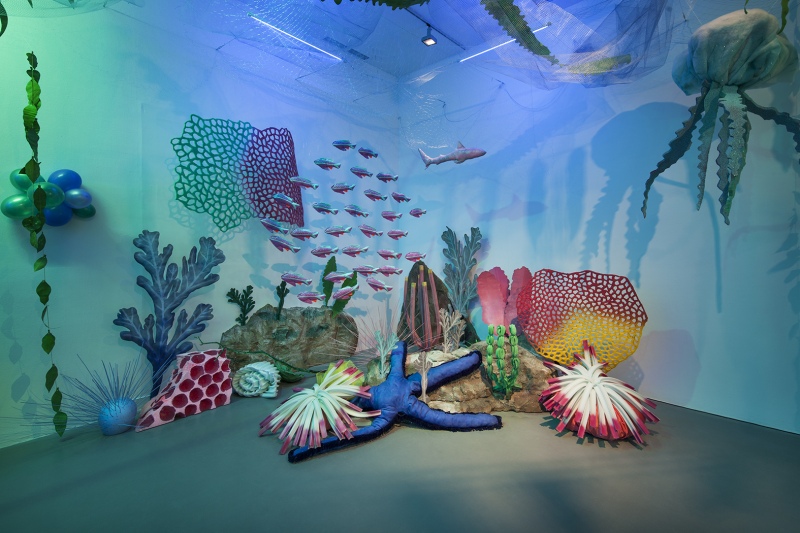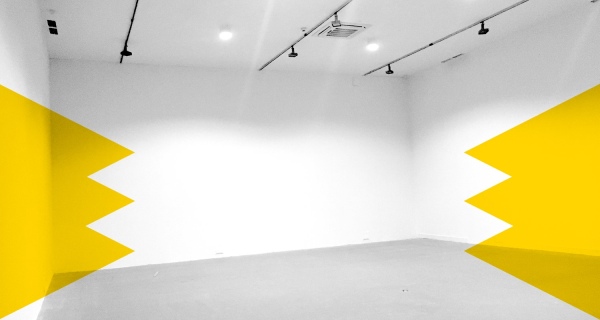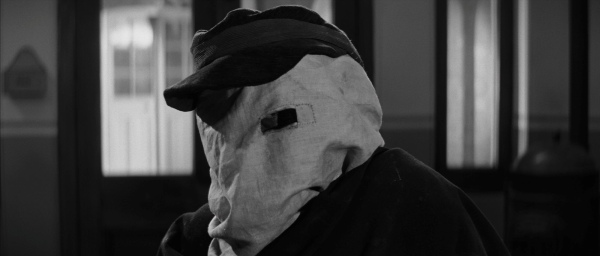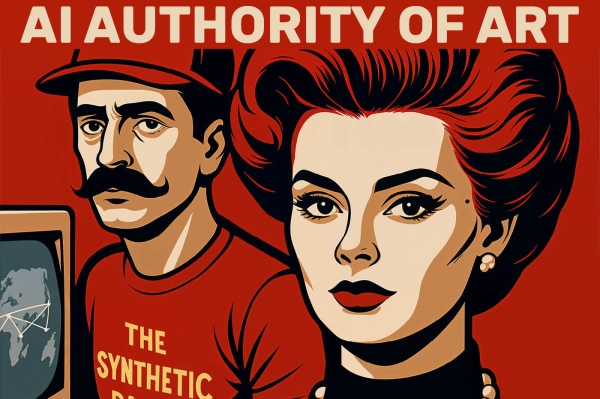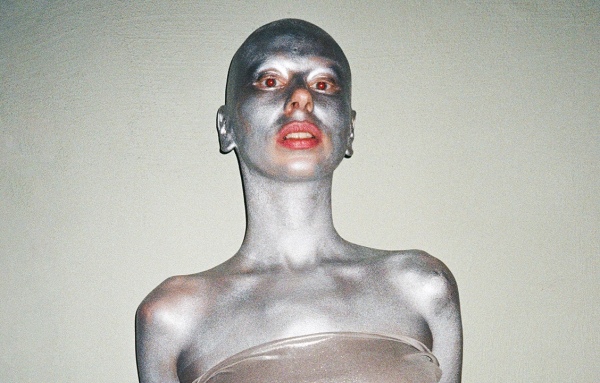Marta Krześlak
Party at the Artists’ Club
A sensitive, lonely, polluted, moribund really coral reef. Beautiful, if slightly kitschy. Formed of colonies of reef-building coral polyps. The exhibition Party at the Artists’ Club – on the bottom of the ocean – is a metaphor of visual artists and designers’ work in the past, and perhaps today too.
Why have we chosen the ocean bottom with the reef as a leitmotif of the show? Sailing out to a coral reef is an escape to another world, just like art making is. Marta Krześlak found that world and the point of departure for the exhibition when reading about the specificity of visual artists’ work in communist Poland.
Krześlak relates to a past that she has no personal experience of. She speaks, therefore, about her notions of it, and her voice bears a discernible trace of nostalgia. She recreates a world she doesn’t know, presenting it as a beautiful, colourful land, the creation of which has required heavy physical work. The objects, resembling those from the ocean bottom, have been crafted by the artist specially for the exhibition. The opening-reception party will be a collective performance – a vehicle that will take us to the “ocean bottom” of the imagination.
While Krześlak’s project is something like a nostalgic image of the past, it is nonetheless characterized by a certain faithfulness and authenticity. This is because the show has been co-designed by Maciej Jasiński, author of stage designs for televised galas and numerous festivals, including the Kołobrzeg Festival of Soldiers’ Song, as well as by Bogdan Mozer, who designed sets for the cult movie The Academy of Mr. Kleks.
As part of preparations for the show, we talked to a number of visual artists who were active during the Polish People’s Republic era as well as to researchers interested in the subject. The process will be summarized and the exhibition complemented by a discussion, during which we will try to define the roles of the visual artist and the artist, and to decide whether such a distinction makes sense at all.
Thanks to artists’ commitment and solid artistic education, post-war Poland saw many outstanding projects realized in the fields of the visual arts and design. We want to look more closely at the conditions of the professional work of visual artists in communist Poland and to compare them with those faced by their counterparts today.
We realize that during the communist period recognized artists did hackwork to make a living and perhaps they weren’t interested in publicizing the fact. The subject of such work, though sometimes embarrassing and still poorly researched, can offer an interesting platform for comparisons and for reflection on the contemporary realities of the artist’s profession.
- Text
- Marcin Polak
